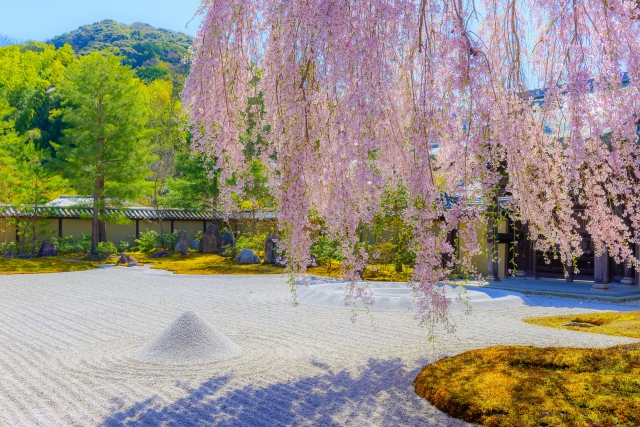Whispers of Stone and Sand
In a world saturated with abundance, Japan offers a vision of beauty through restraint. Karesansui, or dry landscape gardens, distills the essence of nature into its most elemental forms. Sweeping fields of raked gravel conjure oceans and rivers; rugged stones rise as islands or mountains. Unlike the strolling gardens of the Edo period or Europe’s expansive landscapes, karesansui invites the viewer to sit still and contemplate. The garden is not a backdrop for movement but a stage for the mind. The silence of stone and sand speaks louder than rushing water.
From Zen Temples to Timeless Symbols
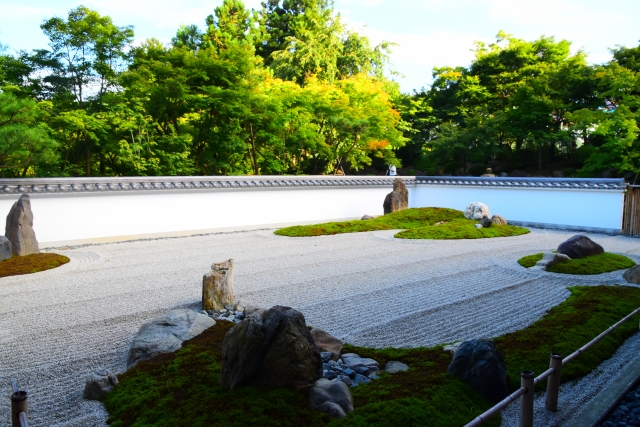
The origins of karesansui can be traced to the Muromachi era (14th–16th centuries), a period when Zen Buddhism deeply shaped Japan’s cultural identity. Temples such as Ryōan-ji, with its iconic fifteen stones set against raked gravel, epitomize this aesthetic. Scholars interpret the garden as a metaphor for islands in a boundless sea, or as a visual koan—an unsolvable riddle designed to provoke meditation. Daitoku-ji’s subtemples offer further variations, where moss, gravel, and stone interplay with architectural geometry. These gardens were not created for leisure alone; they were spiritual tools, backdrops for monks in meditation, and physical embodiments of the Zen philosophy of impermanence.
By the Edo period, karesansui became a symbol of cultural sophistication, embraced by aristocrats and intellectuals. Unlike lush gardens designed for seasonal blossoms, these dry gardens retained their dignity year-round, proof that beauty does not depend on transience alone.
Echoes Across Cultures
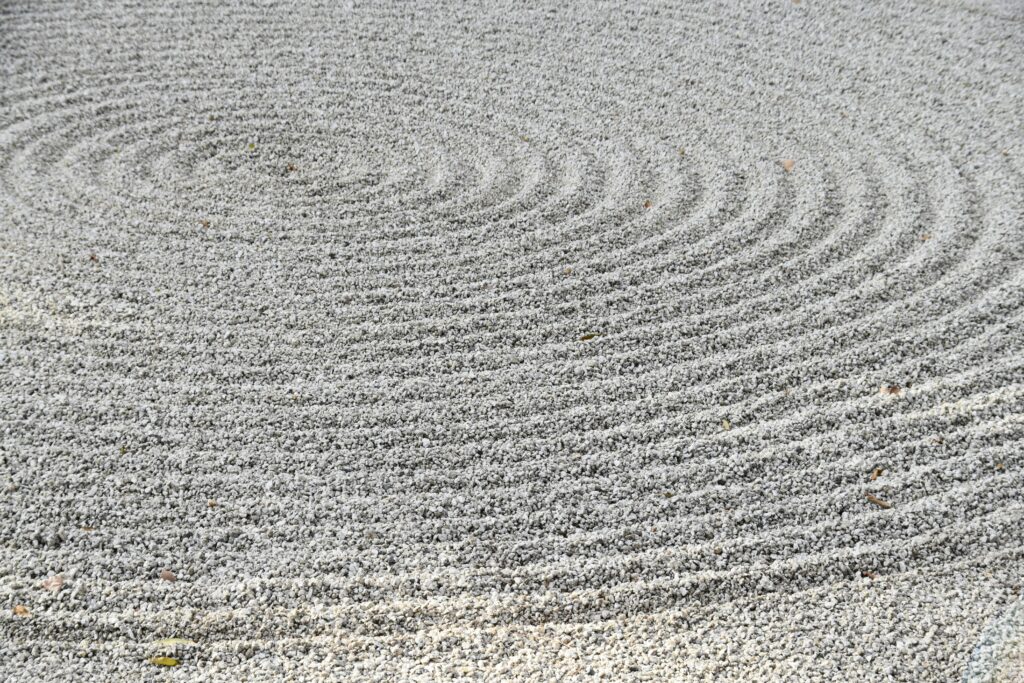
The human desire to capture nature in miniature is universal. In China, scholar gardens in Suzhou combined rockeries, pavilions, and ponds to create a cosmos within walls. Their emphasis was on complexity and surprise, a labyrinthine journey echoing the scholar’s mind. In Islamic cultures, gardens symbolized paradise itself, with water channels dividing spaces into quadrants, creating both symmetry and sensual refreshment. In Renaissance Europe, nature was disciplined into vast perspectives, orchestrated vistas that expressed human dominion over land.
Karesansui is different. It eschews water yet conveys its presence more vividly than streams themselves. It relies on suggestion rather than declaration. Where European gardens overwhelm with scale, and Islamic gardens enchant with water’s sound, Japanese dry gardens invite silence and the art of absence. One might even compare karesansui to modern minimalism or the land art of the 20th century—works that also recognize the profound power of space, material, and reduction.
The Art of Absence
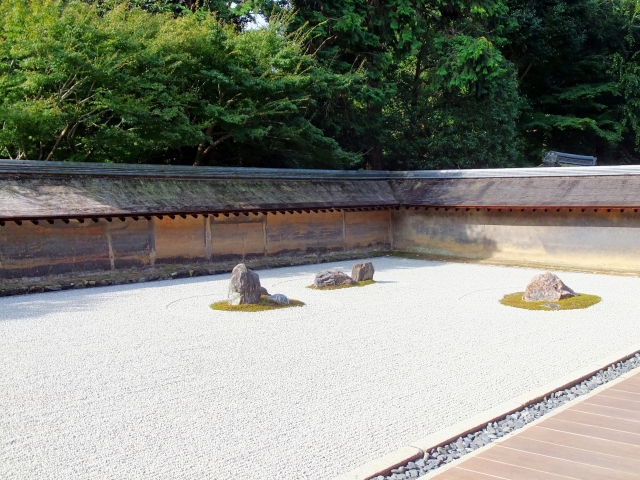
To understand karesansui is to embrace paradox. It is a garden without greenery, a seascape without water, a landscape where the invisible carries more meaning than the visible. The stones are not randomly chosen: they are selected for character, balance, and the ability to suggest mountain ranges or mythical isles. Gravel is meticulously raked in patterns that recall rippling currents or expanding circles from a raindrop’s fall. This daily act of raking is not mere maintenance; it is ritual, a meditation on impermanence.
Nothing in a karesansui garden is permanent. A gust of wind, a stray leaf, or the morning sun alters the scene. This is its essence: a reminder that beauty lies not in fixed perfection but in perpetual renewal. In this way, karesansui transcends horticulture and enters philosophy, offering not only a place of beauty but a way of seeing the world.
The Living Experience
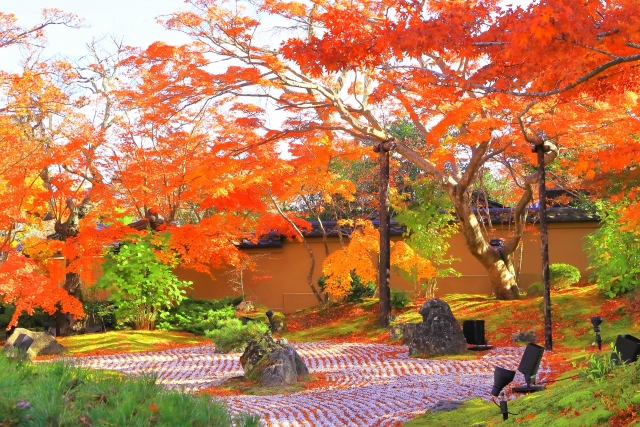
For the traveler, encountering karesansui is more than sightseeing—it is an experience of presence. Visit Ryōan-ji in early morning, before the crowds arrive, and the garden speaks in near silence. At Daitoku-ji’s Daisen-in, follow the raked gravel streams as they flow from symbolic waterfalls toward a wide “ocean” of sand, embodying the journey of life itself. In autumn, the golden light casts elongated shadows across the stones; in winter, a thin layer of snow transforms the garden into a monochrome ink painting. Even in the height of summer, the cool abstraction of white gravel offers relief from the heat.
Unlike gardens meant for strolling, these spaces are best experienced by sitting still, allowing one’s mind to wander the gravel seas and rocky peaks. The true journey happens inward.
Contemporary Interpretations
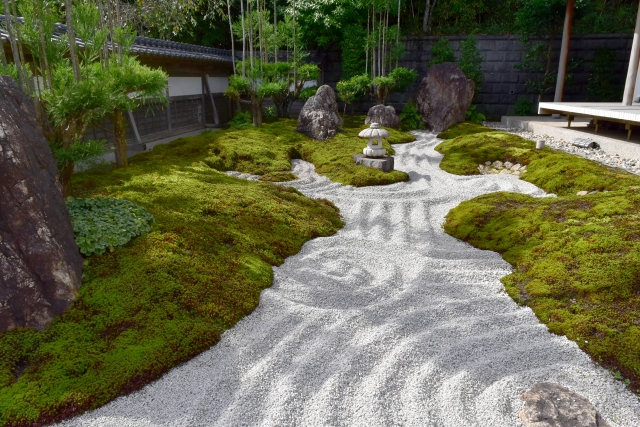
The influence of karesansui extends beyond temple walls. Luxury hotels incorporate dry gardens into courtyards, providing international guests with a pocket of stillness amid urban bustle. Museums and contemporary artists reinterpret its grammar of stone and sand—sometimes on monumental scales, other times through delicate, ephemeral installations. Architects, inspired by its principles, design residences and offices where empty space is as vital as structure.
Even in the corporate world, karesansui has found symbolic resonance. The raked lines have appeared in branding, logos, and wellness retreats, signifying clarity, simplicity, and focus. For a society grappling with information overload, these gardens remind us of the elegance of less.
Future Horizons
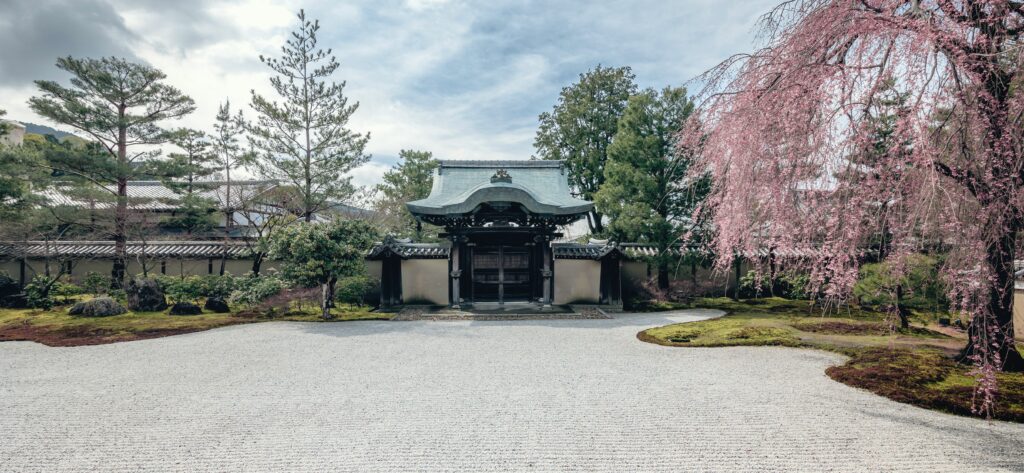
As the global dialogue increasingly revolves around sustainability, mindfulness, and the search for balance, the relevance of karesansui grows ever stronger. These gardens, which require little water and thrive year-round with minimal resources, embody ecological wisdom long before the word “sustainable” entered our vocabulary. Internationally, designers are experimenting with adapting dry garden principles to new contexts—from desert landscapes in the Middle East to minimalist public parks in Europe.
For the discerning traveler, the future of karesansui lies not only in preserving historical sites but also in witnessing how Japan’s ancient aesthetic continues to evolve. The dry garden will never shout for attention; it will continue to whisper—across centuries, across continents, across cultures—a message of stillness that humanity needs more than ever.

